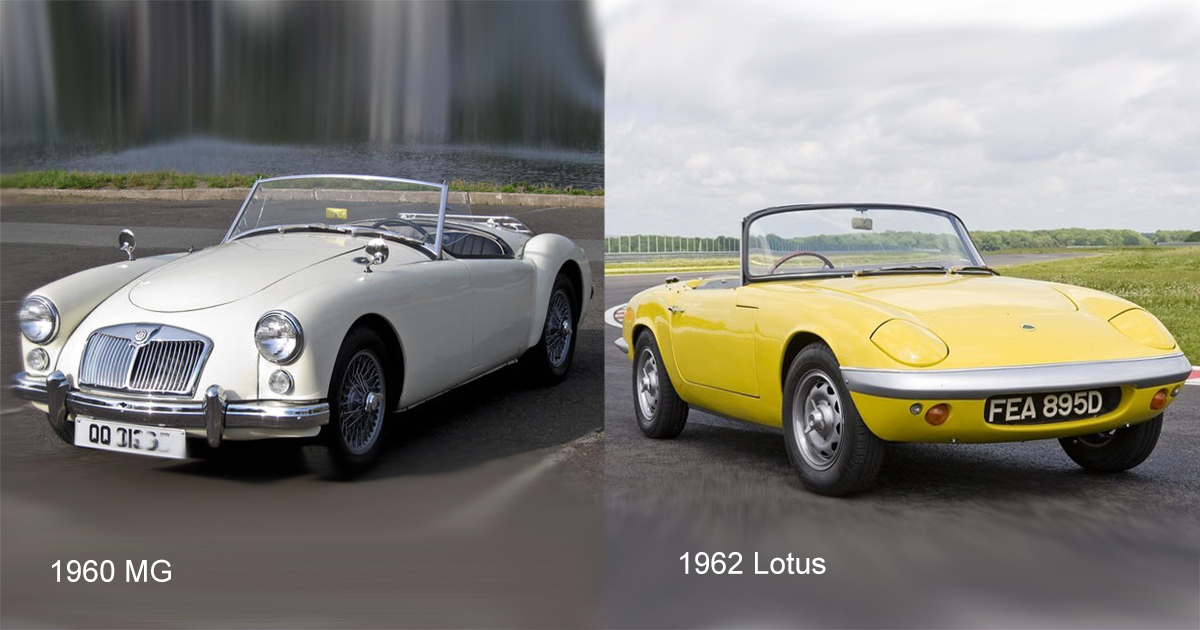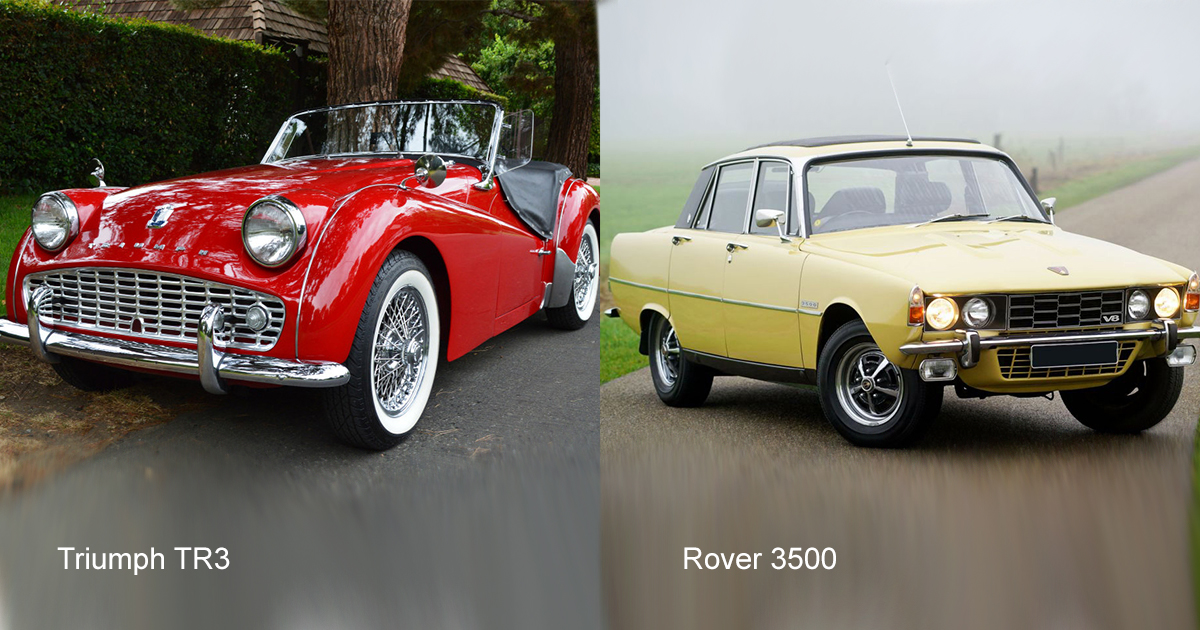Why the British Produce the Best Classic Cars
When it comes to classic cars, personal taste reigns supreme. Some appreciate the elegance and zip of a classic Italian roadster, some love the snarling power of an unrestrained American block V8, while others still gravitate towards the performance and quirks offered by classic German engineering. As it stands today, however, only one country reigns supreme as the king of the classic car market, having produced offerings that appeal to nearly every subset of classic car enthusiast. Yes, whether you judge your classic cars by their style, innovation, performance, quirkiness, luxury or iconography— or some combination therein— it seems nearly impossible to escape the legacy left by British engineering.
That Classic British Style

When it comes to style, the British have perfected a look so beautiful and unique it can be both spotted from miles away and endlessly appreciated up close. The unmistakable shape and elegance of a 1960 Bentley S2, the perfection of a 1964 Aston Martin DB5, or even the gritty, no-nonsense appeal of an early Land Rover Defender are unforgettable features of that iconic English style. British models have evolved with the times, but most of what Britain has to offer maintains a beautiful, quintessentially British look. Then. Of course, there’s the 1970s Jaguar E-Type, whose long, angry nose, spoked wheels and gleaming detail-work has cemented the car as, arguably, the best-looking vehicle ever produced.
The Sport Minimalism

The lightweight, agile sports car has long been a staple of British motoring. Companies like Lotus and MG made a name for themselves by developing simple, stripped down cars that provide the cornering control of a champion and the power to zip away on the straight. Their minimalistic approach helps classic British roadsters connect you to the road like no other car, as well as providing an unmatched ease of maintenance and superb driving experience. With as few components as possible sitting between you and the road, you can rest assured that driving a classic, lightweight British car will put a smile on your face.
Pioneers of Racing

From Jaguar and Bentley’s early Le Mans models to the groundbreaking work done at MG and Lotus, the racetrack is deeply embedded in Britain’s automotive history. Indeed, British cars have been zipping around tracks and past finish lines for as long as racing has existed. Many credit the first ever race between two self-powered vehicles as occurring on British soil, and the iconic British Racing green, which was first adopted in 1902, is as iconic a color as any found in racing. Today, companies like McLaren hold the British racing flag high and carry forward the grand tradition of English racing.
Luxury Fit for a Monarch

If the term ‘classic car’ conjures up images of deep, cushy seats, ashtrays and an abhorrent number of buttons, it seems inescapable that you would consider British offerings as the peak of classic luxury. Brands like Rolls Royce and Bentley have long stood far above any international competition as the marquee classic luxury brands, offering the type of rolling palace that only the British could dream up. Additionally, brands like Aston Martin or Jaguar have perfected the art of mixing luxury with performance and creating the type of classic, fun to drive car that is as comfortable on the highway as it is on the track.
A History of Excellence

Not everyone can agree on exactly what era produced the best classic cars, but no matter what time period you prefer you can rest assured someone in England was producing a quality vehicle. Modern brands like Rolls Royce, Aston Martin, and Jaguar have been around since the early 1900s and were likely producing spectacular classic cars no matter what era you prefer. Then there are brands like MG, Morgan or Triumph, which have since died out, but spent their respective golden years producing some of the best classic cars on the market today. Today, the mark of British excellence is planted firmly on every year automobiles were made available.
Value That Spans an Empire

For classic gearheads, it can be almost painful to part with a car you’ve poured your heart and soul into. When the time comes, however, you can rest assured that your British classic will fetch you a pretty penny. The classic car market is, of course, incredibly volatile. However, several British models consistently rank among the most desired cars on the market today. A well maintained Aston-Martin V8 Vantage or Jaguar E-Type, for example, can go upwards of $200,000, while less popular offerings are still very likely to hold their value. If you’re thinking about resale or just want to be sure that your classic will hold its value, look no further than the union jack.
Eccentricity and Experimentalism

No-one will ever accuse the British of making boring cars. From the frog-eyed front end of the Triumph TR3 to the V8 powered saloon that was the Rover 3500, Britain’s automotive engineers have hashed their reputation on pushing the envelope and experimenting with both style and substance. Some of the stranger models might not have stood the test of time, but who else but the British could have produced something as bonkers as the Reliant Robin, or as groundbreaking as the original Mini. There’s really no point in driving a classic car that blends in with everything else on the road, and many British models have the personality and heart to stand out from the crowd.
Hollywood Icons

The whole point of a classic car is to stand out from the pack, and no-one has produced a more iconic stable of classic cars than the British. Everything from the signature swoop of a Jaguar’s hood to the spirit of ecstasy adorning the grill of a Rolls-Royce simply screams ‘classic car.’ Then there’s the cultural impact of Britain’s classic car lineup. From Mini-Coopers zipping around in The Italian Job to Austin Power’s E-Type Jag, British cars have cemented their place in movie history. And, of course, who could forget about the most iconic car of them all: 007’s Aston Martin DB9.
Limitation Begets Innovation

Look, the world of classic cars is a tricky one filled with passion and prejudice. It seems undeniable, however, that you can tell when your hands grip a steering wheel made by someone in Berkshire, or you rev and engine honed in Gaydon. The British might not have the manufacturing power or resources of some of their larger international competition, but that sense of us-against-the-world really does embed itself deep in every classic car that rolls out of Britain. There’s a world of possibilities when it comes to classic cars, but the British really do produce the cream of the crop.







